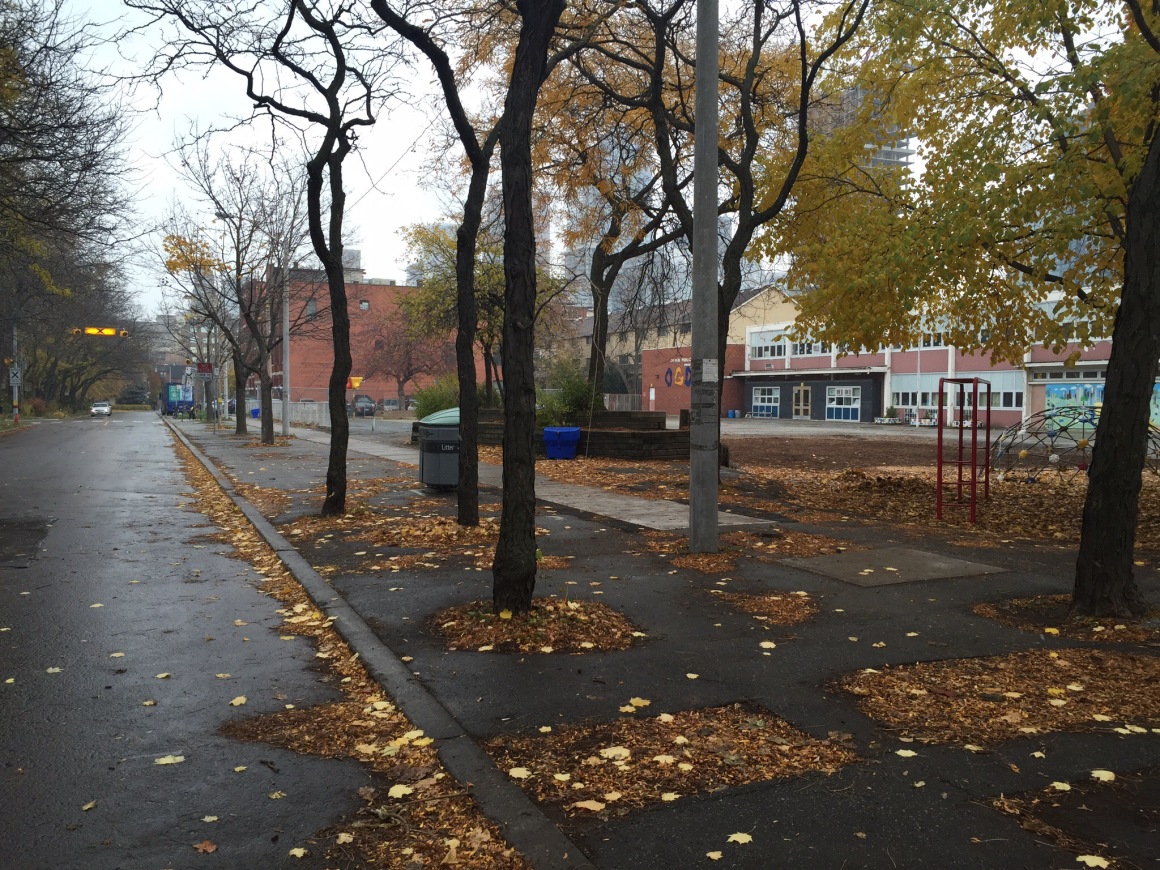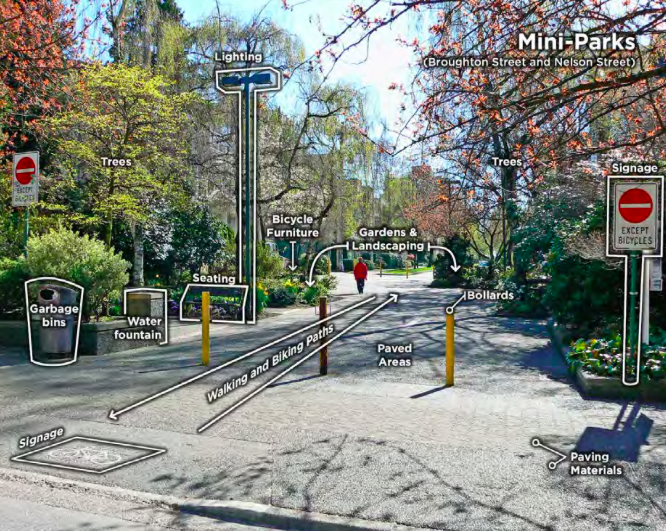
Sometimes a street is a park that just doesn’t know it yet
This Land is Parkland is the park blog of Park People’s manager of policy and research, Jake Tobin Garrett. Read more here.
I pass by Phoebe Street in downtown Toronto often on my way to work. It travels east off of busy Spadina Street and into a calm, quiet residential area with a school. Despite its width there are few cars that travel its length due to a barrier installed to reduce traffic because the school’s playground faces the street.
The whole thing seems like a half-done project to me. Why leave all that asphalt there after going through the trouble of basically barricading the street?
I can’t help but think of the mini-parks in my old neighbourhood in Vancouver’s West End. There are nine of them now, but the first started in 1973 as a traffic calming initiative. The idea was that a half block of a street would be transformed into a green space with gardens, benches and a pathway to allow pedestrians and cyclists through, but not cars.
They are one of my favourite features of the West End, a dense tower neighbourhood with big leafy trees. And I’m not alone. A recent city survey found that the mini-parks were near the top of the list of what people loved about the West End’s streets and that 93% indicated they visited a mini-park several times per week.
The area of Toronto where Phoebe Street is has some of the lowest levels of parkland in the city relative to population and is just north of an area City staff recently said needed new parkland. Not only that, but it would benefit the nearby schoolyard by increasing green space and could actually create a green corridor to help link Spadina through to Grange Park.
So let’s finish what we started and use Vancouver’s mini-parks as a model to turn this part of the street into a park.
Mini-park image from the 2012 West End Community Profile


